Introduction to Air Purifier Fan Motors
Air purifier fan motors play a pivotal role in the operation of air purification systems, functioning as the essential component that circulates air within these devices. The performance and efficiency of an air purifier largely depend on the capability of its fan motor to facilitate the movement of air through filters designed to capture particulates, allergens, and pollutants. As air enters the purifier, it is propelled by the fan motor, allowing for thorough filtration that ensures cleaner air is emitted back into the environment.
There are various types of fan motors utilized in air purifiers, each possessing distinct characteristics that influence their efficiency and operational dynamics. Induction motors, for instance, are a common choice due to their reliability and consistency. These motors operate using electromagnetic induction and provide robust performance, making them suitable for continuous operation, which is essential in maintaining air quality in indoor spaces.
On the other hand, DC (Direct Current) motors have gained popularity due to their energy efficiency and quieter operation. Equipped with advanced technology, DC motors can adjust their speed based on the air quality detected, providing optimized performance while minimizing energy consumption. Thus, the choice of fan motor not only affects the efficiency of the air purification process but also has implications for the overall energy usage of the appliance.
A third category, EC (Electronically Commutated) motors, represents the latest in fan motor technology. These motors combine the best features of AC and DC motors, offering energy savings while providing precise control over speed and air delivery. Such advancements underscore the significance of air purifier fan motors in enhancing the system’s ability to deliver clean air efficiently.
How Air Purifier Fan Motors Work
Air purifier fan motors are integral to the efficiency and effectiveness of air cleaning devices. These motors operate by converting electrical energy into mechanical energy, which is essential for generating airflow. The fundamental principle behind this conversion involves the interaction of magnetic fields within the motor, causing the rotor to spin. As the rotor spins, it drives the attached fan blades, which are designed to maximize airflow while minimizing noise and energy consumption.
The design of fan blades plays a pivotal role in airflow direction and volume. Different blade shapes and angles can either improve or hinder air circulation. For example, wider blades typically increase airflow, allowing more air to pass through the purifier at a given speed. Additionally, the curvature of the blades can influence the direction of airflow, enabling the air purifier to expel clean air optimally into the room.
Speed settings on air purifier fan motors are another critical aspect of their function. Many modern purifiers come equipped with multiple speed settings, allowing users to adjust the airflow according to their needs. Higher speeds can significantly boost purification efficiency by increasing the volume of air that passes through the filters, while lower speeds can ensure quieter operation for nighttime use. This adaptability to user preference directly impacts air purification efficiency, as increased airflow can enhance the capture of airborne pollutants and provide cleaner air.
Moreover, the motor’s ability to create pressure differentials is crucial for successful filtration. As air is pulled into the purifier, the motor creates a negative pressure zone, encouraging more air to flow into the system. This interplay between airflow rates and mechanical design underpins the overall effectiveness of air purifiers, ensuring that harmful contaminants are effectively removed from indoor environments.
Types of Fan Motors in Air Purifiers
Understanding the types of fan motors utilized in air purifiers is crucial for evaluating their performance and efficiency. There are primarily three types of motor technologies commonly employed in air purifiers: AC motors, DC motors, and brushless motors. Each of these has its unique benefits and drawbacks, influencing their suitability for different air cleaning needs.
AC motors, or alternating current motors, are widely recognized for their durability and straightforward design. They typically provide robust performance at a lower initial cost, making them an attractive option for budget-conscious consumers. However, one significant drawback is their relatively higher energy consumption and noise levels compared to other motor types, which could be a consideration in residential settings where quiet operation is preferred.
On the other hand, DC motors, or direct current motors, are gaining popularity in air purifier technologies. These motors are lauded for their energy efficiency, often consuming significantly less electricity than their AC counterparts. This reduced energy use translates to lower utility bills over time, making them an appealing choice for eco-conscious consumers. Additionally, DC motors operate quietly, which enhances user comfort. However, they usually come with a higher upfront cost, which may deter some buyers.
Another emerging option is the brushless motor, which combines features of both AC and DC motors. Brushless motors are known for their high efficiency and longevity since they have fewer moving parts that can wear out over time. They typically offer low noise levels and are very adaptable for varying air purification needs. However, like DC motors, brushless motors can be more expensive, impacting overall affordability for consumers.
In conclusion, selecting the appropriate fan motor type is vital for optimizing air purifier performance. It is essential to weigh the advantages and disadvantages of AC, DC, and brushless motors carefully, considering factors such as energy efficiency, noise levels, lifespan, and upfront costs to make an informed decision.
Maintenance and Troubleshooting of Air Purifier Fan Motors
Proper maintenance of the air purifier fan motor is crucial for ensuring efficient air cleaning and prolonging the lifespan of the unit. Regular cleaning is one of the primary steps in maintaining the air purifier’s performance. Dust and debris can accumulate on the fan blades and within the motor housing, leading to reduced airflow and potential overheating. It is recommended to turn off and unplug the air purifier before starting the cleaning process. Using a soft brush or cloth, gently remove any buildup on the fan blades and surrounding areas. Additionally, using a vacuum cleaner with a brush attachment can effectively eliminate dust from hard-to-reach spots.
Checking for obstructions is another essential maintenance practice. Occasionally, objects or dust can block the fan blades or the air intake, hindering the airflow necessary for optimal operation. Inspect the air purifier regularly to ensure that no obstacles are present, and that the air intake vents are clear. If obstructions are identified, they should be promptly removed to restore the unit’s efficiency.
Lubrication of the moving parts is vital to maintain the smooth operation of the fan motor. While many modern air purifiers feature sealed motors that don’t require additional lubrication, some older models may benefit from periodic lubricant application. Refer to the manufacturer’s guidelines for recommendations regarding lubrication frequency and the type of lubricant to use.
Common issues that may signal fan motor problems include reduced airflow and unusual noises emanating from the unit. Reduced airflow can indicate a clogged filter or a malfunctioning fan motor. In such cases, it is advisable to check the filter status and replace it if necessary. Unusual noises, such as grinding or rattling, may suggest that the fan blades are rubbing against an obstruction or that the bearings are worn out. Addressing these concerns promptly can prevent further damage and enhance the air purifier’s efficiency.
Future Innovations in Air Purifier Fan Motor Technology
The landscape of air purification technology is evolving rapidly, with fan motors at the center of this transformation. Current trends indicate a significant push towards enhancing energy efficiency in air purifier fan motors. Manufacturers are consistently examining ways to optimize the power consumption of these motors while maintaining superior air filtration performance. Innovations such as electronically commutated (EC) motors are gaining traction. These motors not only consume less energy compared to traditional designs but also offer precise control over fan speeds, which enhances overall air circulation efficiency.
Moreover, the integration of smart technology in air purifiers is set to revolutionize user experience. With advancements in IoT (Internet of Things), future air purifier fan motors may incorporate sensors that can monitor air quality in real-time. This technology allows the fan speed to adjust automatically based on the level of pollutants detected in the environment. Consequently, this feature not only ensures optimal performance but also minimizes energy costs by operating the device only as needed.
Noise reduction is another critical area of innovation. Manufacturers are exploring advanced engineering techniques and design modifications to ensure that air purifier fan motors operate quietly. New noise-dampening materials and changes in the motor’s rotational design can help create a more peaceful indoor environment, which is especially valuable for users who rely on these devices in bedrooms or workspaces.
Looking ahead, it is anticipated that air purifier fan motor technology will continue to progress, aligning with the broader trends of sustainability and convenience. Consumers can expect devices that not only perform better in terms of air purification but also seamlessly integrate into their smart homes. The ongoing commitment to innovation in fan motor technology promises to enhance air quality and overall well-being in the years to come.
| Air Purifier Brand Name | Blueair, Coway, Dyson, Honeywell, Kent, Levoit, Mi (Xiaomi), Philips, Samsung, Sharp |
|---|---|
| Technician Type | With Technician, Without Technician |
Only logged in customers who have purchased this product may leave a review.
Related products
-
Air Purifier Parts
Air Purifier Ozone Generator
₹6,500.00 – ₹7,100.00 Select options This product has multiple variants. The options may be chosen on the product pageRated 0 out of 5 -
Air Purifier Parts
Air Purifier UV Light
₹6,500.00 – ₹7,100.00 Select options This product has multiple variants. The options may be chosen on the product pageRated 0 out of 5 -
Air Purifier Parts
Air Purifier Activated Carbon Filter
₹2,600.00 – ₹3,200.00 Select options This product has multiple variants. The options may be chosen on the product pageRated 0 out of 5 -
Air Purifier Parts
Air Purifier Pre-Filter
₹1,300.00 – ₹1,900.00 Select options This product has multiple variants. The options may be chosen on the product pageRated 0 out of 5


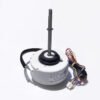
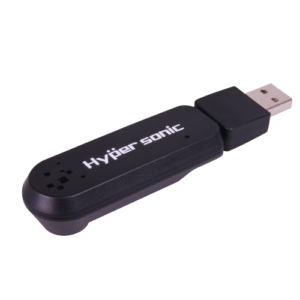
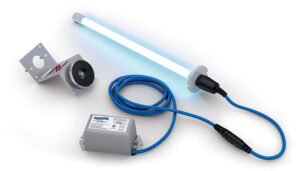
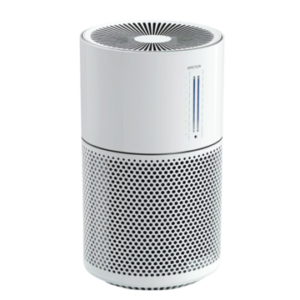
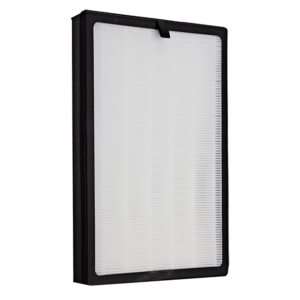
Reviews
There are no reviews yet.